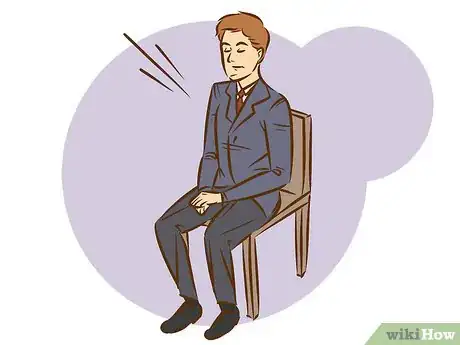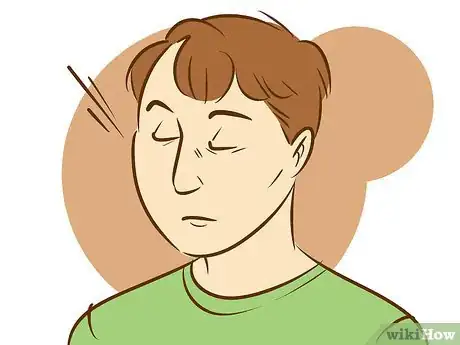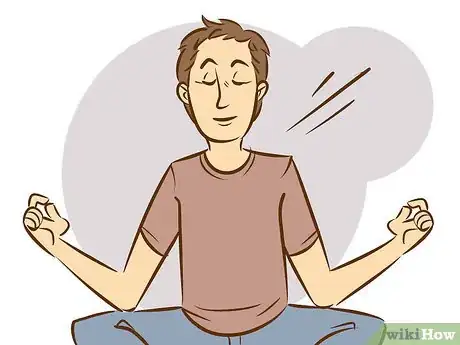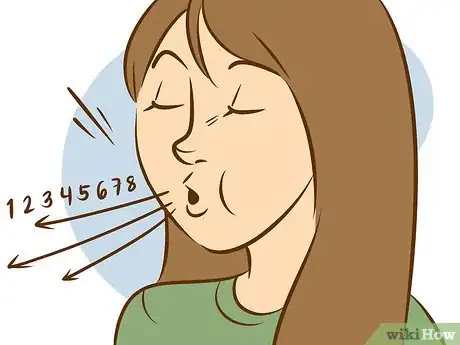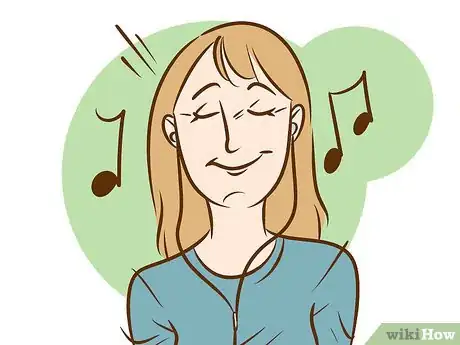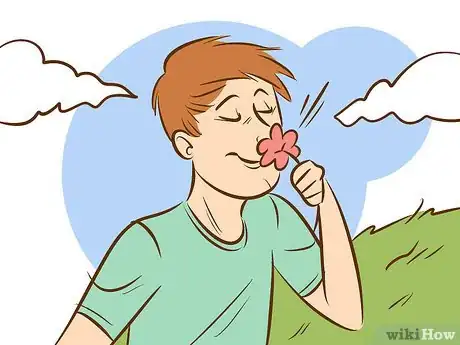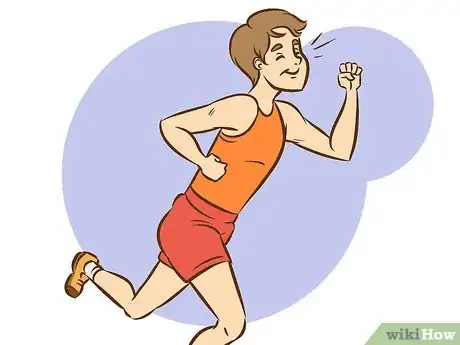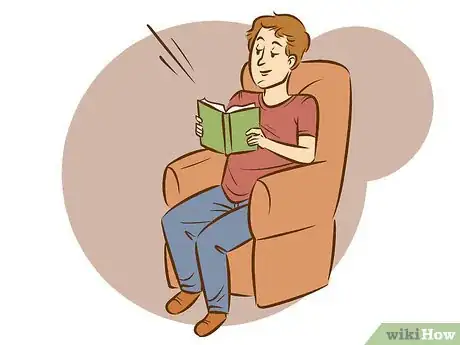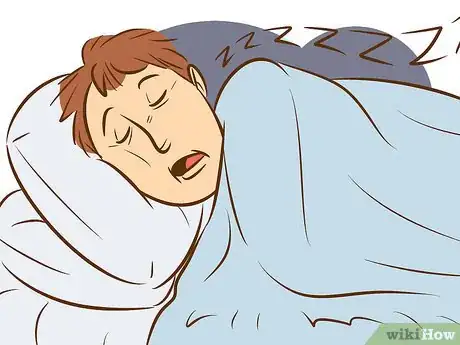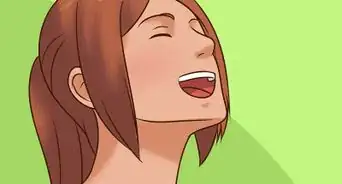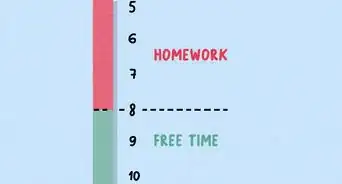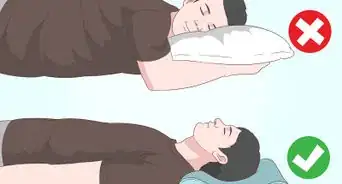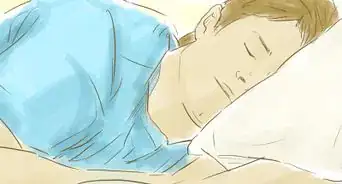This article was co-authored by Masha Kouzmenko. Masha Kouzmenko is a Meditation Coach and the Co-Founder of Silicon Valley Wellness, a company based in the San Francisco Bay Area that provides holistic health education services such as mindfulness meditation and yoga instruction to businesses. She has over five years of meditation and yoga instruction experience and specializes in guided meditation. She has a BA in Economics from the University of California, Berkeley.
There are 13 references cited in this article, which can be found at the bottom of the page.
wikiHow marks an article as reader-approved once it receives enough positive feedback. In this case, 90% of readers who voted found the article helpful, earning it our reader-approved status.
This article has been viewed 197,918 times.
Some days can be so overwhelming, you want to scream or cry, or do a bit of both. The environment around you might be chaotic, full of loud family members, co-workers, or peers, and it might be a struggle to take a moment to relax and clear your mind. Many people suffer from a chaotic lifestyle that leaves little time for relaxation and self-reflection. But there are several techniques you can try to help you release any stress or tension in your daily life and chill out.
Steps
Practicing Deep Breathing and Meditation
-
1Sit in a quiet space. Find a quiet room and draw the curtains so there is no light to distract you.[1] If you are trying to clear your mind in your office, close the door and pull the blinds so you have a moment alone.[2]
- Seek out a space that is quiet and isolated so you can process your emotions and release any stress or tension. Try to find a spot with no phones, computers, or co-workers or friends who can interrupt you. With practice, you'll be able to meditate in louder environments.[3]
-
2Try progressive muscle relaxation. This technique can help you relax the major muscle groups in your body.[4]
- Sit on a yoga mat or lie down.
- Start with your facial muscles. Frown hard for 5-10 seconds and then relax your facial muscles.
- Scrunch up your face or knit your eyebrows for 5-10 seconds and then relax your muscles.
- You should feel a noticeable difference between the tense and relaxed muscles.
- Tighten and release other muscle groups, such as your shoulders, arms, chest, and legs, until you have tensed and relaxed individual muscle groups throughout your whole body.
Advertisement -
3Practice a five-minute meditation exercise.[5] Once you have found a quiet space where you will not be interrupted, you can do a simple meditation exercise to clear your mind.[6]
- Close your eyes and sit still for 30 seconds.
- Focus on your breathing. Take deep inhales and exhales through your nose. Try to slow down your breathing so it is deep and long on each inhale and exhale. Do this for about a minute.
- Continue to breathing slowly and deeply for two more minutes. Picture a calm, natural space, like a beach, a lake, or a forest.
- Take another minute to sit and breathe. Open your eyes once the five minutes are over.
- Work your way up to meditating for 20–30 minutes at a time.[7]
-
4Do deep breathing exercises. Breathing exercises can help to reduce your stress level and calm down. Sit in a quiet space, with your back straight, and try the 4-7-8 exercise.[8]
- Place the tip of your tongue against your upper front teeth. Exhale through your mouth, making a whoosh sound. Close your mouth and inhale through your nose to the count of four.
- Hold your breath for a count of seven. Then, exhale through your mouth, making a whoosh sound, to the count of eight.
- Inhale again and repeat the cycle three more times for a total of four breaths. Make sure you always inhale quietly through your nose and exhale with a whoosh sound through your mouth.
- Continue this cycle of breathing 5-10 times. Don’t worry if you feel slightly lightheaded after practicing this breathing exercise. This is a normal side effect and indicates you are releasing stress and tension in your body.
-
5Listen to calming music. Finish your meditation by putting on music that calms and relaxes you. Look for mixes online with calming music, like a Classical or ambient music mix.[9]
- You can also create your own mix with music you find calming and relaxing.
Changing Your Environment
-
1Go to a calm place in nature. This could be your favorite bench in a park near your office, a quiet garden near your school, or a grassy spot by your home. Remove yourself from a chaotic environment and retreat to a natural space.[10] It has been shown that being surrounded by plants and nature can create a calming effect and help to clear your mind.[11]
-
2Do something active, like walking, running, or hiking. One of the best ways to relax is actually to be active and exercise. In fact, studies show that regular exercise can increase your energy level and help you clear your mind.[12] Focusing on an activity that will take your mind off of a bad day or a chaotic environment will also help you get over any negative feelings you may be having. Work out your body and give your mind a rest.[13] [14]
- Do at least 30 minutes of cardio or short 10-minute bursts of exercise by walking or running.
- Go for a bike ride or a hike in your favorite natural spot or on your favorite trail.
-
3Spend quality time with loved ones. Another way to relax is to spend time with family and friends. Do a fun activity together, like a games night or bowling, go for a drink to blow off some steam, or simply have a friend over for a cup of tea. Spending time with loved ones is a great way to shift your mood and relax.[15] [16]
-
4Read a book in a private space. Set aside time to delve into a good book you’ve been wanting to read and retreat to a quiet space. Immersing yourself in a good book can take your mind off of any stress or chaos in your everyday life and give you time to yourself.[17]
Using Self Care
-
1Practice gentle yoga postures. Exercises that are continuous and rhythmic, like walking, swimming, dancing, and yoga, are good for relaxing your brain and body. These exercises also involve flow like movement, so you are forced to focus on another activity rather than your bad day. Restorative yoga helps your body relax and restore itself. But you don’t have to go to a yoga class to practice yoga. Instead, you can do yoga in your chair at your desk.[18]
- Lotus position is the traditional seat for meditation and it can be modified so you can practice this pose at your desk. Sit comfortably in your chair, with your neck and spine straight and erect.
- Cross your legs so you are sitting cross-legged in the chair. Place your hands on your thighs, palms up, with your thumbs and first fingers touching. Breath deeply through your nose for 10-15 breaths.
- Not only will this calm your mind, this pose will also release any stress in your spine from sitting at your desk all day.
- You can also try a simple relaxing pose to calm your mind. Cross your arms and place them on your desk or a flat surface. Rest your head on your crossed arms and take deep breaths. Close your eyes and hold this position for 10-15 breaths.
-
2Pamper yourself. Take some time out of your day to focus on your needs and wants. Self-care through massage, manicures, and a long bath can all do wonders to relax and clear your mind.
-
3Get a good night’s sleep. One of the best ways to relax and clear your mind is to get 8 hours of quality sleep. Go to bed at your usual time, shut off all electronics in bed, and focus on shutting down your mind so you can rest. You should be well-rested and refreshed for the next day.
- If you’d rather take a quick nap to relax or clear your mind, keep your naps short, between 10 to 30 minutes. This will prevent sleep inertia, which is when you feel groggy and disoriented after a nap that goes on for longer than 30 minutes.[19]
- The best time for a nap is usually mid-afternoon, before 3 pm. This is the time of day you will likely experience post-lunch sleepiness or a lower level of alertness. Naps taken before 3 pm should not interfere with your nighttime sleep.[20]
Expert Q&A
-
QuestionWhere is the best place to empty your mind?
 James BrownJames Brown is a San Francisco Bay Area-based teacher of Vedic Meditation, an easy and accessible form of meditation with ancient roots. James completed a rigorous 2-year study program with Vedic masters, including a 4-month immersion in the Himalayas. James has taught thousands of people, individually, and in companies such as Slack, Salesforce, and VMWare.
James BrownJames Brown is a San Francisco Bay Area-based teacher of Vedic Meditation, an easy and accessible form of meditation with ancient roots. James completed a rigorous 2-year study program with Vedic masters, including a 4-month immersion in the Himalayas. James has taught thousands of people, individually, and in companies such as Slack, Salesforce, and VMWare.
Meditation Coach Seek out a space that is quiet and isolated so you can process your emotions and release any stress or tension. Try to find a spot with no phones, computers, or co-workers or friends who can interrupt you. With practice, you'll be able to meditate in louder environments.
Seek out a space that is quiet and isolated so you can process your emotions and release any stress or tension. Try to find a spot with no phones, computers, or co-workers or friends who can interrupt you. With practice, you'll be able to meditate in louder environments. -
QuestionHow can I clear my head of unwanted thoughts?
 James BrownJames Brown is a San Francisco Bay Area-based teacher of Vedic Meditation, an easy and accessible form of meditation with ancient roots. James completed a rigorous 2-year study program with Vedic masters, including a 4-month immersion in the Himalayas. James has taught thousands of people, individually, and in companies such as Slack, Salesforce, and VMWare.
James BrownJames Brown is a San Francisco Bay Area-based teacher of Vedic Meditation, an easy and accessible form of meditation with ancient roots. James completed a rigorous 2-year study program with Vedic masters, including a 4-month immersion in the Himalayas. James has taught thousands of people, individually, and in companies such as Slack, Salesforce, and VMWare.
Meditation Coach Try practicing meditation for 20–30 minutes at a time to help you develop more mindfulness and eliminate stress.
Try practicing meditation for 20–30 minutes at a time to help you develop more mindfulness and eliminate stress. -
QuestionHow can I relax my mind to sleep?
 Trudi Griffin, LPC, MSTrudi Griffin is a Licensed Professional Counselor in Wisconsin specializing in Addictions and Mental Health. She provides therapy to people who struggle with addictions, mental health, and trauma in community health settings and private practice. She received her MS in Clinical Mental Health Counseling from Marquette University in 2011.
Trudi Griffin, LPC, MSTrudi Griffin is a Licensed Professional Counselor in Wisconsin specializing in Addictions and Mental Health. She provides therapy to people who struggle with addictions, mental health, and trauma in community health settings and private practice. She received her MS in Clinical Mental Health Counseling from Marquette University in 2011.
Professional Counselor First, learn to relax your body, then your mind. Deep breathing and mindful meditation are the best practices to use for getting the mind and body to relax.
First, learn to relax your body, then your mind. Deep breathing and mindful meditation are the best practices to use for getting the mind and body to relax.
References
- ↑ Masha Kouzmenko. Meditation Coach. Expert Interview. 26 March 2020.
- ↑ http://www.positivityblog.com/index.php/2011/11/16/bad-day/
- ↑ James Brown. Meditation Coach. Expert Interview. 3 April 2019.
- ↑ https://www.uhs.uga.edu/stress/relax.html
- ↑ Masha Kouzmenko. Meditation Coach. Expert Interview. 26 March 2020.
- ↑ http://www.positivityblog.com/index.php/2011/11/16/bad-day/
- ↑ James Brown. Meditation Coach. Expert Interview. 3 April 2019.
- ↑ http://www.drweil.com/drw/u/ART00521/three-breathing-exercises.html
- ↑ https://8tracks.com/explore/calm
- ↑ http://www.huffingtonpost.com/2014/04/08/relaxing-activities-clear-mind_n_5105710.html
- ↑ http://ellisonchair.tamu.edu/health-and-well-being-benefits-of-plants/#.VXC_v2RViko
- ↑ http://www.scientificamerican.com/article/why-does-exercise-make-us-feel-good/
- ↑ http://www.helpguide.org/articles/depression/dealing-with-depression.htm
- ↑ http://www.positivityblog.com/index.php/2011/11/16/bad-day/
- ↑ http://www.huffingtonpost.com/2014/04/08/relaxing-activities-clear-mind_n_5105710.html
- ↑ http://www.helpguide.org/articles/depression/dealing-with-depression.htm
- ↑ http://www.huffingtonpost.com/2014/04/08/relaxing-activities-clear-mind_n_5105710.html
- ↑ https://www.uaex.edu/life-skills-wellness/health/physical-activity-resources/chair-yoga.aspx
- ↑ http://www.mayoclinic.org/healthy-lifestyle/adult-health/in-depth/napping/art-20048319?pg=1
- ↑ http://www.mayoclinic.org/healthy-lifestyle/adult-health/in-depth/napping/art-20048319?pg=2
